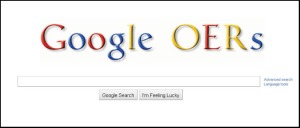Having decided on WordPress as the front-end for the Collections Project we are currently working on the ‘video of the week’ section. This is intended to be a series of recommended videos that will be rotated week by week and will also provide a searchable list of video resources. Our task for the last couple of the months has been finding and reviewing social science methods videos and adding appropriate meta-data to improve the findability of the resource.
This has turned out to be a surprisingly difficult, time-consuming task. Glossing over the difficulties of locating the videos and assessing quality, how to attach basic meta-data has been a major challenge. Our expert workshop and survey both identified a need amongst methods teachers for clearly defined criteria so that they know who has created a resource, when, which level it is appropriate for, and a description of what the resource is. A central theme of the Collections Project has been how to adopt meta-data that reflects user-needs as opposed to the technical perspective of the repository designers.
Describing Videos
The MLA Handbook gives the following advice about citing videos:
First give facts about the video (title-underlined), director or author
(if provided), production company (if provided), distributor, date of release,
and digital distributor
These guidelines are clearly intended for conventionally produced videos and do not really fit the kind of videos found on YouTube. Without going into the thorny issues of tags, just describing the author, date and level of the resource has turned out to be extremely difficult.
Author
In our focus group a couple of participants commented that it was often easier to find the uploader of OERs rather than the author. However video resources present a problem; who the ‘author’ is cannot be established in the same way as for a book. Should it be the person or the institution that created it? This information is more like knowing the publisher of a book and may not be helpful.
Another choice is the main subject of the video. With a lecture this is quite straightforward, an interview introduces the problem of whether to include the interviewer, when it is a collective effort (such as a series of individual and group scenes) things get even more confused. In the case of the lecture the person recording has little relevance to the resource, however the closer the video gets to a documentary the more important what might be termed the ‘director’ becomes.
So far we have adopted the latter strategy because many of the videos are talks given by one academic. Another reason is that the title of the video cannot be changed and does not usually include the name of the academic. However a more suitable description may be ‘subject’ rather than ‘author’.
Date
Knowing the date of when a resource is created is an important criteria, however in many sources (particularly YouTube) contributors only record the upload date. Does it matter that sometimes the date refers to the creation date and sometimes the upload date? Should one be consistent and record the reliable information which is the upload date? However the upload date can be misleading, for example a video filmed in 1990 and put on YouTube in 2011. And, in the case of tutorials of qualitative data analysis computer packages, the date of creation provides a clue as to the version of the software being used that a recent upload date would conceal.
Level
Wanting to know what level a resource is appropriate for is a frequent request. Before starting on the evaluation exercise I constructed a neat series of categories such as first year undergraduate, undergraduate, masters, PHD, postgraduate and beginning researchers. However in practice it has been difficult to allocate such precise levels. For example, the division seems clear between undergraduate and postgraduate judged on a continuum of simplicity to complexity. But what if it is an introductory video covering a method that is not likely to have been encountered at undergraduate level? A simple description of a novel method in this context is equally appropriate for a postgraduate (or beginning researcher). In addition there is a great deal of variation in undergraduates’ exposure to methods teaching depending on the institution and degree of specialisation within their course. What may be considered as postgraduate materials in one institution may well be thought of as undergraduate resources in another.
Multiple Precise Categories vs Usability
Trying to construct the video database has been a salutary exercise in categorisation; at each point the temptation has been to extend and elaborate the categories. But this takes the meta-data ever further away from the interests of those who must fill it in. The difficulties may well be resolved through consensus as digital resources are more widely used and cited in academic research. For now we have to continue attempting to balance the demands of a consistent searchable database with the meta-data users are willing and able to contribute.



